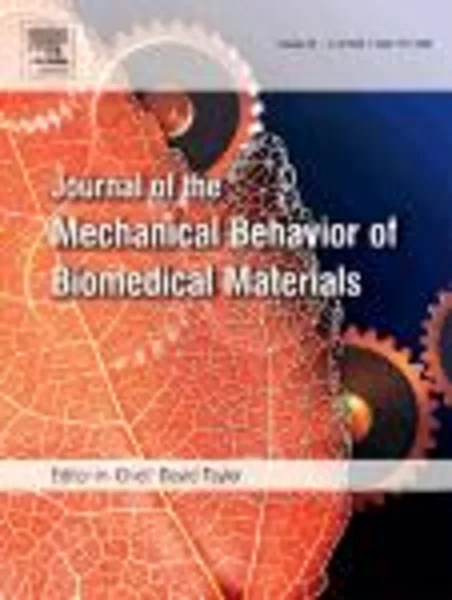-
application of finite element analysis to the design of tissue leaflets for a percutaneous aortic valve
جزئیات بیشتر مقاله- تاریخ ارائه: 1394/01/01
- تاریخ انتشار در تی پی بین: 1394/01/01
- تعداد بازدید: 665
- تعداد پرسش و پاسخ ها: 0
- شماره تماس دبیرخانه رویداد: -
percutaneous aortic valve (pav) replacement is an attractive alternative to open heart surgery, especially for patients considered to be poor surgical candidates. despite this, pav replacement still has its limitations and associated risks. bioprosthetic heart valves still have poor long-term durability due to calcification and mechanical failure. in addition, the implantation procedure often presents novel challenges, including damage to the expandable stents and bioprosthetic leaflets. in this study, a simplified version of fung’s elastic constitutive model for skin, developed by sun and sacks, was implemented using finite element analysis (fea) and applied to the modelling of bovine and kangaroo pericardium. the fea implementation was validated by simulating biaxial tests and by comparing the results with experimental data. concepts for different pav geometries were developed by incorporating valve design and performance parameters, along with stent constraints. the influence of effects such as different leaflet material, material orientation and abnormal valve dilation on the valve function was investigated. the stress distribution across the valve leaflet was also examined to determine the appropriate fibre direction for the leaflet. the simulated attachment forces were compared with suture tearing tests performed on the pericardium to evaluate suture density. it is concluded that kangaroo pericardium is suitable for pav applications, and superior to bovine pericardium, due to its lower thickness and greater extensibility.
مقالات جدیدترین رویدادها
-
استفاده از تحلیل اهمیت-عملکرد در ارائه الگوی مدیریت خلاقیت سازمانی و ارائه راهکار جهت بهبود
-
بررسی تاثیر ارزش وجوه نقد مازاد بر ساختار سرمایه شرکت های پذیرفته شده در بورس اوراق بهادار تهران
-
بررسی تأثیر سطح افشای ریسک بر قرارداد بدهی شرکت های پذیرفته شده در بورس اوراق بهادار تهران
-
بررسی تأثیر رتبه بندی اعتباری مبتنی بر مدل امتیاز بازار نوظهور بر نقد شوندگی سهام با تأکید بر خصوصی سازی شرکت ها
-
تأثیر آمیخته بازاریابی پوشاک ایرانی بر تصویر ذهنی مشتری پوشاک ایرانی (هاکوپیان)
-
بررسی عوامل موثر بر پایایی سازه های بتنی
-
نهادینه سازی مدیریت استراتژیک منابع انسانی در سازمان های دانشی
-
ارزیابی اثرات بار حرارتی محیطی در سدهای بتنی وزنی
-
بررسی رابطه بین آمیخته بازاریابی با وفاداری مشتری با نقش میانجی رضایت و اعتماد در فروشگاه های لوازم خانگی شهرستان گنبد کاووس
-
ارائه رویکردی تلفیقی از ابزار های داده کاوی و متدولوژی شش سیگما
مقالات جدیدترین ژورنال ها
-
مدیریت و بررسی افسردگی دانش آموزان دختر مقطع متوسطه دوم در دروان کرونا در شهرستان دزفول
-
مدیریت و بررسی خرد سیاسی در اندیشه ی فردوسی در ادب ایران
-
واکاوی و مدیریت توصیفی قلمدان(جاکلیدی)ضریح در موزه آستان قدس رضوی
-
بررسی تاثیر خلاقیت، دانش و انگیزه کارکنان بر پیشنهادات نوآورانه کارکنان ( مورد مطالعه: هتل های 3 و 4 ستاره استان کرمان)
-
بررسی تاثیر کیفیت سیستم های اطلاعاتی بر تصمیم گیری موفق در شرکتهای تولیدی استان اصفهان (مورد مطالعه: مدیران شرکتهای تولیدی استان اصفهان)
-
تاثیر افشای اجباری ضعف کنترل های داخلی بر تصمیم گیری های سرمایه گذاری شرکت
-
کرامت ذاتی انسان از دیدگاه حقوق بشر در اسلام و در حقوق بین الملل
-
مروری بر خلاقیت و نوآوری و مدیریت ارتباط با مشتری در سازمان ها
-
قشربندی و نابرابری اجتماعی: بررسی دیدگاه ماکس و بر در رابطه با قشربندی اجتماعی
-
the effect of maternal position during the first stage of labor-on-labor pain intensity during cesarean section




سوال خود را در مورد این مقاله مطرح نمایید :